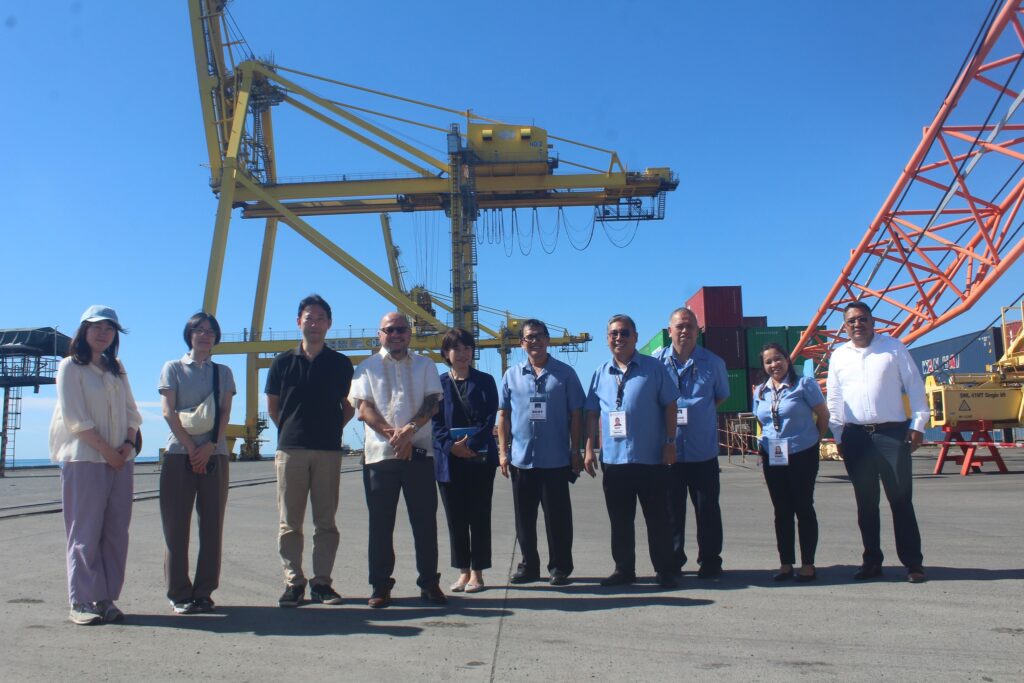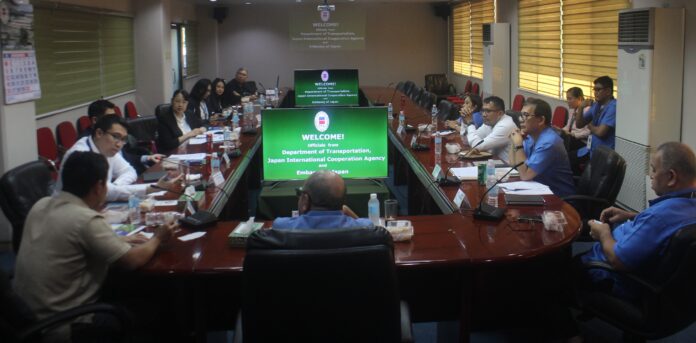By Mike Baños
The expansion of the Mindanao Container Terminal (MCT) remains the topmost priority of the Phividec Industrial Authority (PHIVIDEC IA) as it marks its 50th Anniversary in 2024.
“Our MCT has already reached its maximum capacity of 270,000 TEUs,” said Atty. Joseph Donato J. Bernedo, PHIVIDEC IA Administrator and Chief Executive Officer, during a January 23 press conference on the occasion of its 50th Anniversary kick-off and Parapet Signage Ceremony at the estate’s administration building. “By 2030, the traffic is projected to reach 500,000 TEUs. So we really need to expand the capacity.”
A TEU (Twenty-foot Equivalent Unit) is the international unit of measurement used to determine cargo capacity for container ships and terminals. This measurement is derived from the dimensions of a 20-foot standardized shipping container. Because shipping containers can be 20 or 40-feet in length, the capacity of a container ship can depend on the ratio of the two sizes.
In order to avoid confusion and standardize a ship’s capacity, the number of containers a ship can accommodate is translated into a measure equivalent to the number of 20-foot containers known as TEU. For example, one 40-foot container is equal to two TEUs.
In an earlier interview, Atty. Bernedo stressed the crucial role the MCT plays in the regional economy and the urgency of undertaking the MCT Phase II Expansion as soon as possible.

Atty Joseph Donato Bernedo, PHIVIDEC IA Administrator & Chief Executive Offficer
“I’m very keen on pursuing the expansion of our port. I want to have it finished during my time or at least get it going because this is long overdue. We already reached maximum capacity in 2018,” Atty. Bernedo stressed.
With a 24-hectare terminal area for infrastructure, equipment and support facilities, a 300-meter berth originally designed to handle one international vessel measuring up to 200 meters, and an annual capacity of 270,000 TEUs, MCT is regulated by PHIVIDEC-IA and has been operated by ICTSI since 2008 when the Manila-based terminal operator signed a 25-year concession.
The US$ 85.34 Million (P 3.24 Billion) MCT was 85% funded by the Japan Bank for International Cooperation (JBIC) and 15% by PHIVIDEC IA, and designed and managed by Pacific Consultants International (PCI), and Japanese Contractor Mitsubishi-Kawasaki-Toyo Joint Venture (MKT-JV).
JBIC is a policy-based financial institution of Japan, and conducts lending, investment and guarantee operations while complementing private sector financial institutions.
Importance of MCT Phase II Expansion
In his discussions with ICTSI, Atty. Bernedo disclosed it was determined that the port’s expansion is urgently needed because the berthing windows when the ships dock have become very tight. This, on top of several expressions the authority has received from big international shipping lines who wish to ship through MCT, but whose preferred berthing windows cannot be accommodated, further stresses the need to immediately undertake the Phase II expansion.
PHIVDEC IA’s share of the income from ICTSI’s MCT operations and regulated ports accounts for approximately 60 percent of the authority’s annual revenues.
“If we don’t expand there may come a time where we may also have to turn away the domestic shipping market, but we do not want that to happen, and we will do everything in our capacity to accommodate all the players,” Atty. Bernedo noted.
Project Status
The proposed US$66 million (P3.392 billion) MCT Expansion project includes the expansion of the berth length by 300 meters, expansion of container yard and construction of loading and unloading facilities.
The Phase II Expansion Project has already been favorably endorsed by the National Economic & Development Authority and Regional Development Council Region X, which have named it as a priority project for the Northern Mindanao Regional Development Plan.
Atty. Bernedo said he already met with the Japan International Cooperation Agency (JICA) to explore getting a grant for funding of the pre-feasibility study, and received positive reaction from the evaluators who noted the authority’s compliance with most of the factors they look for, which should help in the approval process and identification of funding sources. The JICA team has so far made four land-side and sea-side inspections of the proposed expansion project site.
According to Atty. Bernedo, the project has likewise received a favorable endorsement from the Department of Transportation (DOTr) which listed it in the National Development Plan. Through Phividec’s efforts, the DOTr has issued a “Confirmation of Endorsement to Secure a Feasibility Study Grant”, to which Phividec has signed its conformity. Because of this, the MCT II expansion will be part of the roll-out for the DOTr Priority Projects for the coming years.
As a government-to-government project, PHIVIDEC IA and the DOTr team have made representations with the Dept of Foreign Affairs (DFA) because as a gov’t. to gov’t. project, the DFA will need to endorse the project to the Embassy of Japan and the Japanese government that it is a viable project and is something JICA can help with.
“On the other hand, we are still entertaining other options in terms of expanding the port, not necessarily through an Official Development Assistance (ODA),” Atty. Bernedo clarified. “We remain open to PPP arrangements, unsolicited proposals and such other BOT arrangements and in fact, have already received feelers from interested parties on that side.”
“So on either option, there is a good potential that this project will be rolled out very, very soon and we are not going to stop until this happens,” he emphasized.

The Japan International Cooperation Agency (JICA) visited the PHIVIDEC Industrial Authority (PHIVIDEC-IA) last November 9, 2023 led by JICA HQ Sr Deputy Director. Nishii Yosuke. (Phividec IA Photo)
Impact on Metro Cagayan de Oro
As a cornerstone of the Mindanao Regional Development Plan, the MCT Phase II Expansion project is expected to have a substantial multiplier effect on the emerging Metropolitan Cagayan de Oro area which NEDA projects to become the Philippines next metropolitan center by 2025 after Manila, Cebu and Davao in its Philippine Development Plan (PDP) 2017-2022.
Based on its projected population growth, strategic location as gateway and logistics hub for Northern Mindanao, and role as a key education center in the south, it is expected to join Metro Manila, Metro Cebu, and Metro Davao in serving as the economic and administrative cores of the three main island groups of the country, the NEDA said.
As the regional center and business hub of Northern Mindanao, the emerging Metropolitan Cagayan de Oro area includes the city of El Salvador; fourteen municipalities of Misamis Oriental (Alubijid, Balingasag, Claveria, Gitagum, Initao, Jasaan, Laguindingan, Libertad, Lugait, Manticao, Naawan, Opol, Tagoloan, and Villanueva); and six municipalities of Bukidnon (Manolo Fortich, Baungon, Libona, Malitbog, Sumilao and Talakag).
“If we have a bigger capacity volume port, more business will come in, more trade will be conducted, and there is a higher possibility for our locators and investors to increase because we have a bigger port,” Atty. Bernedo affirmed.
“Once our locators/investors increase, the multiplier effect will bring more employment opportunities for our people, more revenues for the province, the LGUs around us, and it will give birth to other ancillary businesses that might be on the supply chain, so it is one of the biggest projects embedded in the regional development plan. And that is why it is also quite expensive.”
####






